Creative production
Quick beats to success: how to hit the high notes faster in music production
April 2024
6 mins

Table of contents
Your files, faster.
Access any file instantly, anywhere. Collaborate in real-time from one always-up-to-date, secure cloud filespace.
Outdated sync ‘n share workflows
Sound designers and composers are all too familiar with the burden of traditional sync-and-share methods when scoring films, TV shows, video games, and other multimedia projects. Producers, directors, and post-production supervisors laboriously send media assets through links, which composers then have to download to their local machines and then import into their Digital Audio Workstation (DAW). This process is not only time-consuming but also riddled with inefficiencies that inhibit the smooth flow of creative work.

Depending on the size of the file(s), this could take hours or, in some cases, even days. What’s more, other potential setbacks, such as unreliable internet connectivity, could further delay the process. Essentially, your media that needs to be imported into the DAW (Avid Pro Tools, Cubase, Logic Pro, among others) for work to commence is stranded in the cloud, held hostage by the slow and unpredictable nature of the process.
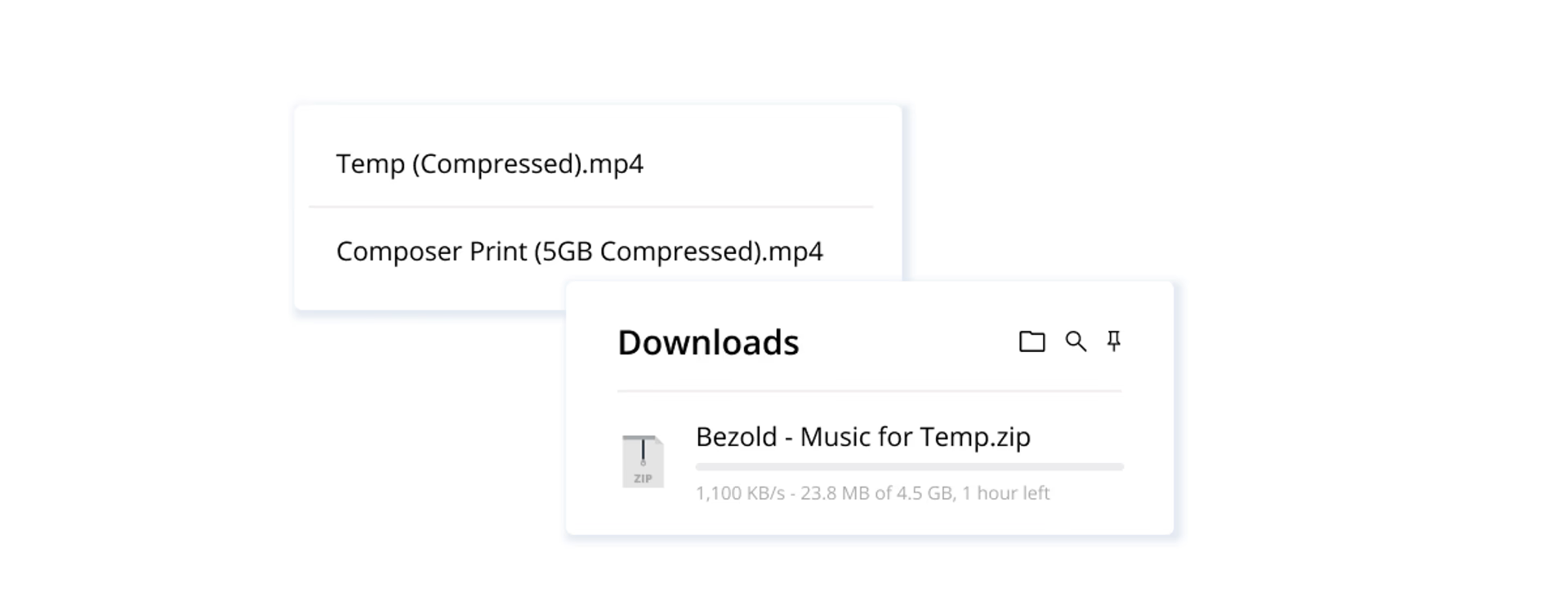
Adding to this, once the media finally makes its way to your local machine, there can be instances where the file size is so large that, for the sake of efficiency, it must be re-exported in a smaller, compressed format. This adds another layer of time-consuming tasks to the workflow. The same intricate process is then repeated with remote collaborators, costing days and often weeks of precious time and disrupting the overall workflow significantly.
A new era: music production in the cloud
At the end of the day, scoring for multimedia projects should ignite creativity, not wrestling with old-fashioned workflow methods. With the cloud revolutionizing DAW workflows, creative freedom has become a new reality for many in the industry. Cloud collaboration tools offer many features that make remote work easier for creatives. These features include:
Universal access: Offers you the freedom to tap into your work from any location and at any time, as long as you have an internet connection.
Real-time collaboration: Enables multiple team members to contribute to the same project at the same time, fostering seamless collaboration.
Increased storage: Facilitates easy sharing of large media files, reducing the need for physical storage.
Integration: Works seamlessly with existing digital audio workstations (DAWs) and other creative production software without disrupting your workflow.
Security: Provides strong safeguards, including data encryption and secure access protocols, to keep your projects and files secure from potential threats.
LucidLink is a prime example of a cloud-based solution for creatives that delivers on all these aspects while eliminating common frustrations like download delays and syncing issues from your workflow. Instead, when accessing media in my Filespace, I can interact with them right inside my DAW without any extra rendering or external processing. The solution does this by leveraging caching technology, which ensures that only the essential bits or sections of a file I need are streamed to my DAW. As a result, you can easily edit even the most resource-intensive media formats in real-time without having to download the entire file.

Here’s a tip for harmonizing your team’s efforts. With LucidLink, your media files are made available to everyone on your team in real-time once they are added to a shared Filespace. As soon as a file is added, you can access it and begin working on creating the score.
When producing a file from my workspace using LucidLink, I access it the same way I would if I were to plug in an external hard drive—making it very easy to import the file (or multiple files) into my DAW. For this purpose, I utilize Steinberg’s Cubase, a music creation and production software, but you can use your go-to creative apps such as Avid Pro Tools, Logic Pro, or any preferred DAW.
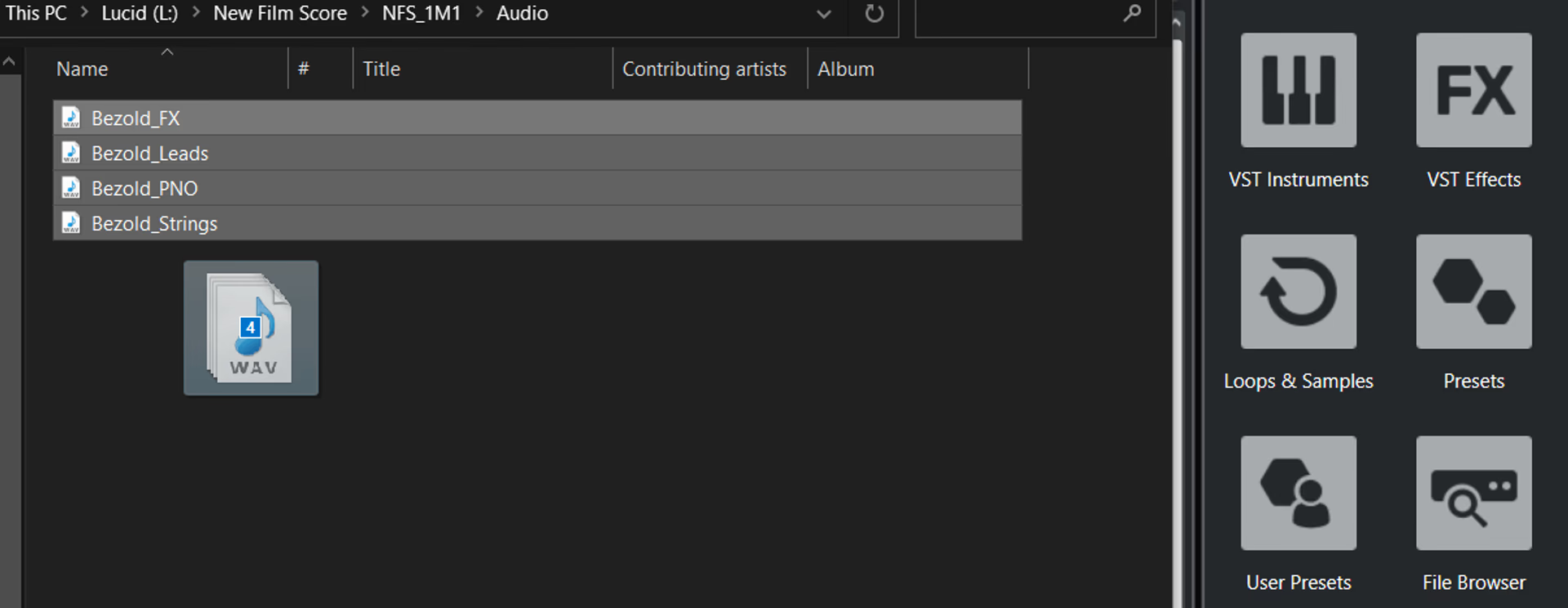
What’s impressive is how the media appears and behaves in my DAW as if it’s been downloaded to my local machine when in fact, it’s securely stored in the cloud. This workflow is not only efficient but also saves considerable resources on my CPU, as it eliminates the need for massive data downloads.
Thanks to how LucidLink works, my time to productivity was cut down dramatically, giving me ample opportunity to focus on my work without the constant burden of checking the clock and stressing over looming delivery deadlines.
As a Film Composer, I have to work with many file sessions as I score for each scene (or cue) in a production. With LucidLink, I can easily repeat the seamless process of importing files directly from the cloud into my DAW for every session. In addition to this, I can more easily collaborate remotely with team members around the world. Thanks to the streamlined experience, gone are the days of logging into and navigating multiple different cloud platforms for downloading and uploading files.
Simplifying collaborative review
Previously, one of the more time-consuming aspects of delivering a final score was the review process. This process required us to send numerous video files, sometimes to multiple teams. It necessitated exporting the video reference for review, uploading it, and then waiting for the reviewing team to download it.
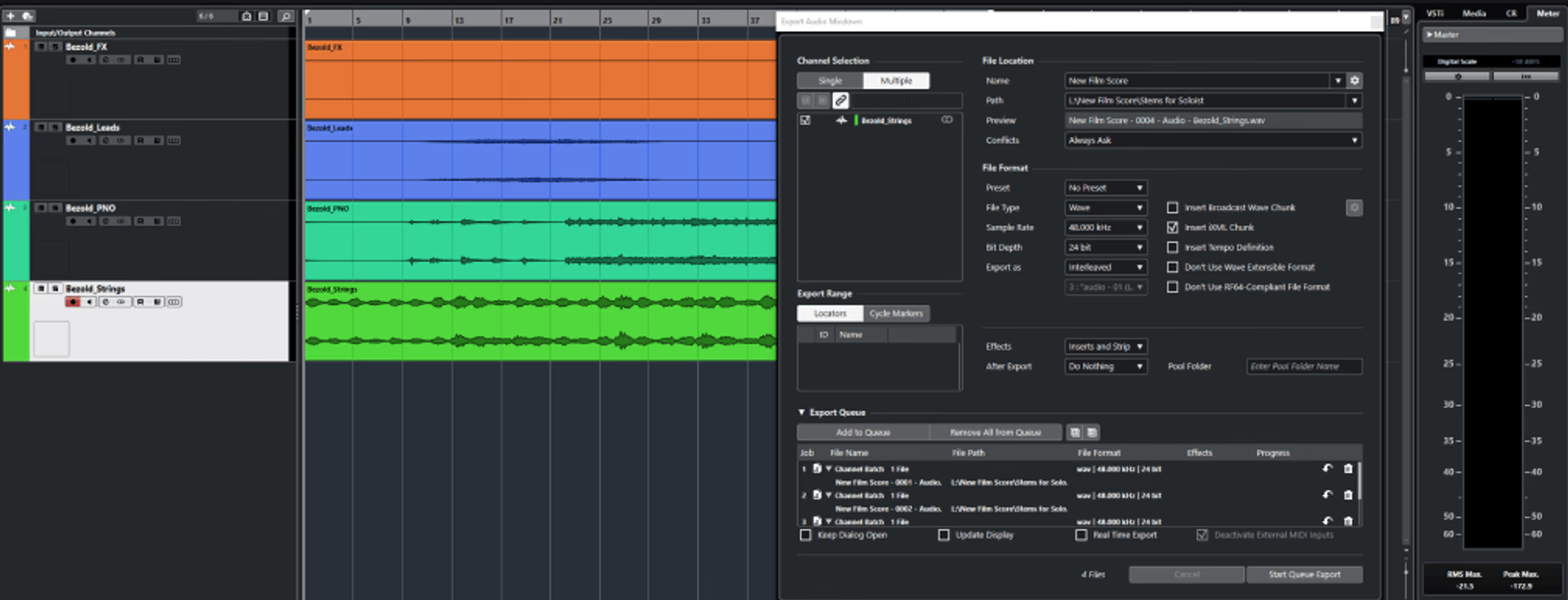
However, with our shared filespace, this process has been significantly streamlined. Now, I export the reference directly to our filespace. The reviewers assigned to the folder can access and review the content immediately without any additional waiting time for downloads.
The utility of this approach becomes even more evident when collaborating with other musicians. I can export audio stems directly to a shared folder. Whether it’s Cubase, Pro Tools, Logic Pro, or any other DAW, my team members can swiftly import these files and start working, keeping the creative momentum strong, no matter their location.

This setup saves a significant amount of time and greatly improves project organization. When dealing with large scores, there could easily be hundreds, if not thousands, of files to manage. Thus, maintaining order is always a best practice during the creation of a film score, especially considering that there might be several versions of the work under review by producers.
File management tips for scoring music

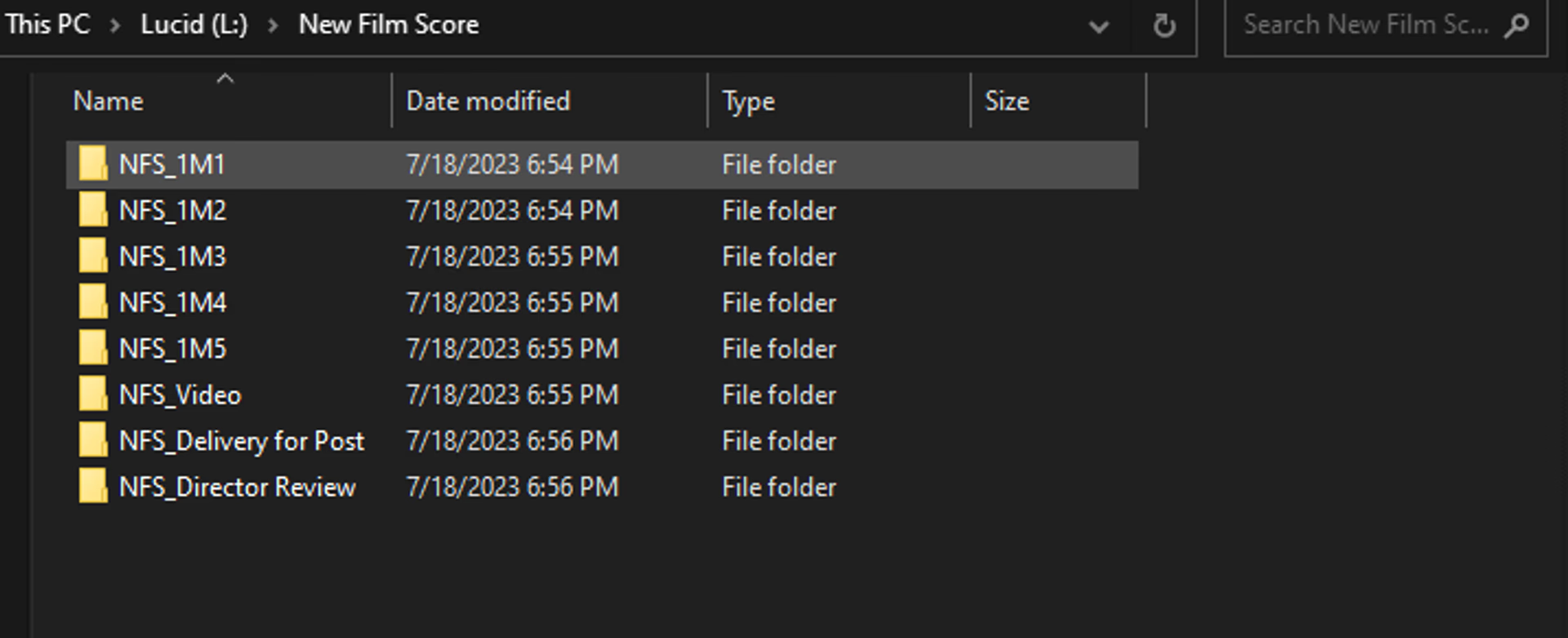
A good practice that I always follow in managing my media is maintaining structure and order with file management. Each Cue gets its own folder containing its own Cubase session, video, and audio assets. I then have separate share folders for collaboration and review, so I can easily edit the access I give collaborators within my LucidLink control panel.
The takeaway is simple. The more organized and accessible your media assets are, the more seamless and productive your production process becomes. I encourage you to explore these tools and methods for yourself. Who knows, they may end up being the game-changer you’ve been looking for in your creative workflow.
Ready to witness the power of LucidLink firsthand? Elevate your music and audio production workflows to new heights. Get started today for free!
About the author: Chris Bezold is a highly talented American Composer known for his captivating and thematic music compositions for film, TV, and games. His notable works include Legacy (2020), Hustle Down (2019), Your Move (2017), and Larceny (2016). He pursued Music Production at Full Sail University and graduated as Salutatorian in 2012. Alongside his musical endeavors, Chris served six years in the US Army National Guard and is currently the Director of Customer Success at LucidLink. Currently based in San Diego, California, he finds joy in running on the beach, savoring a good cup of coffee, and volunteering his piano-playing skills at retirement homes.
Keep reading
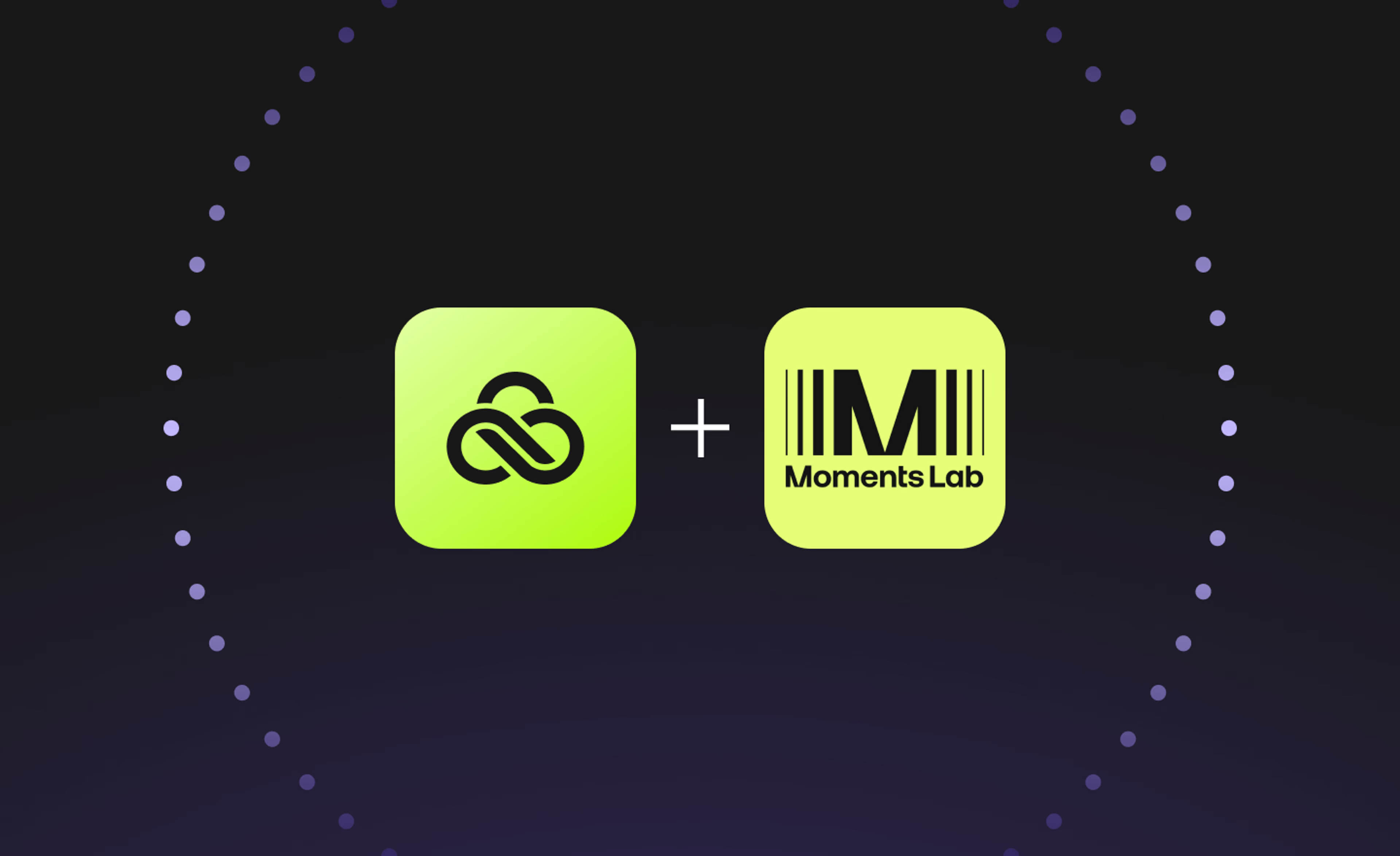
Creative production
Unlocking the potential of your media library with AI and real-time access
Explore how AI and real-time access make your media library searchable, actionable and ready for faster, smarter storytelling.
16 December 2025, 5 mins read

Creative production
How to build a creative workflow that really flows
Discover how to build a seamless creative workflow using practical strategies and tools. Get tips for collaboration and creative project management.
26 November 2025, 17 mins read

Creative production
Sports video editing: the complete guide for sports highlights and video editing
Learn how to create pro-level sports highlight videos with the best sports video editing software. Tips, tools and real-world workflows included.
20 November 2025, 7 mins read
Join our newsletter
Get all our latest news and creative tips
Want the details? Read our Privacy Policy. Not loving our emails?
Unsubscribe anytime or drop us a note at support@lucidlink.com.